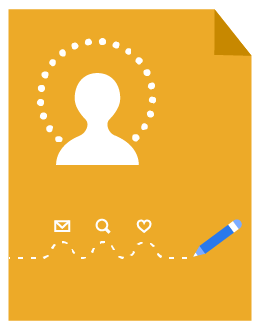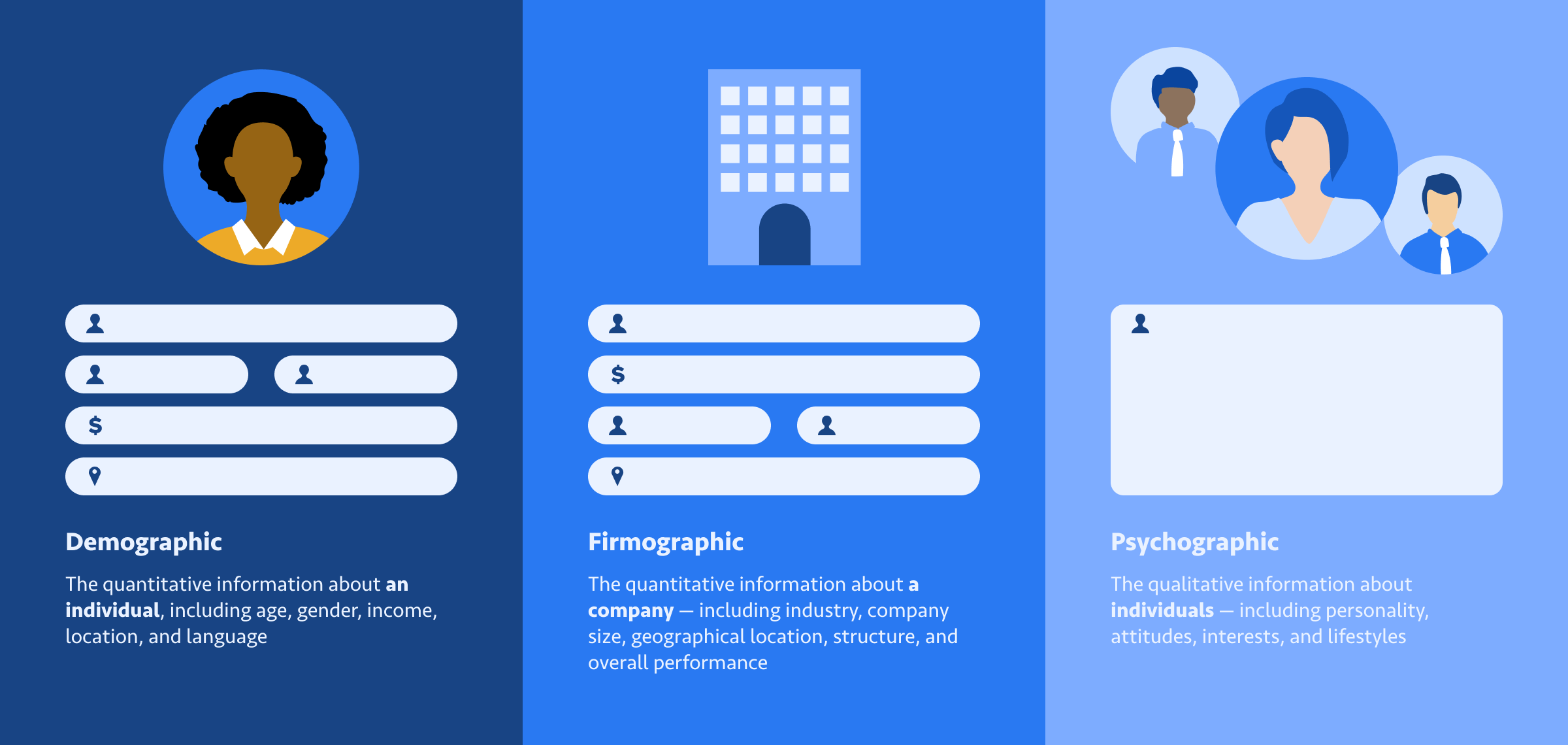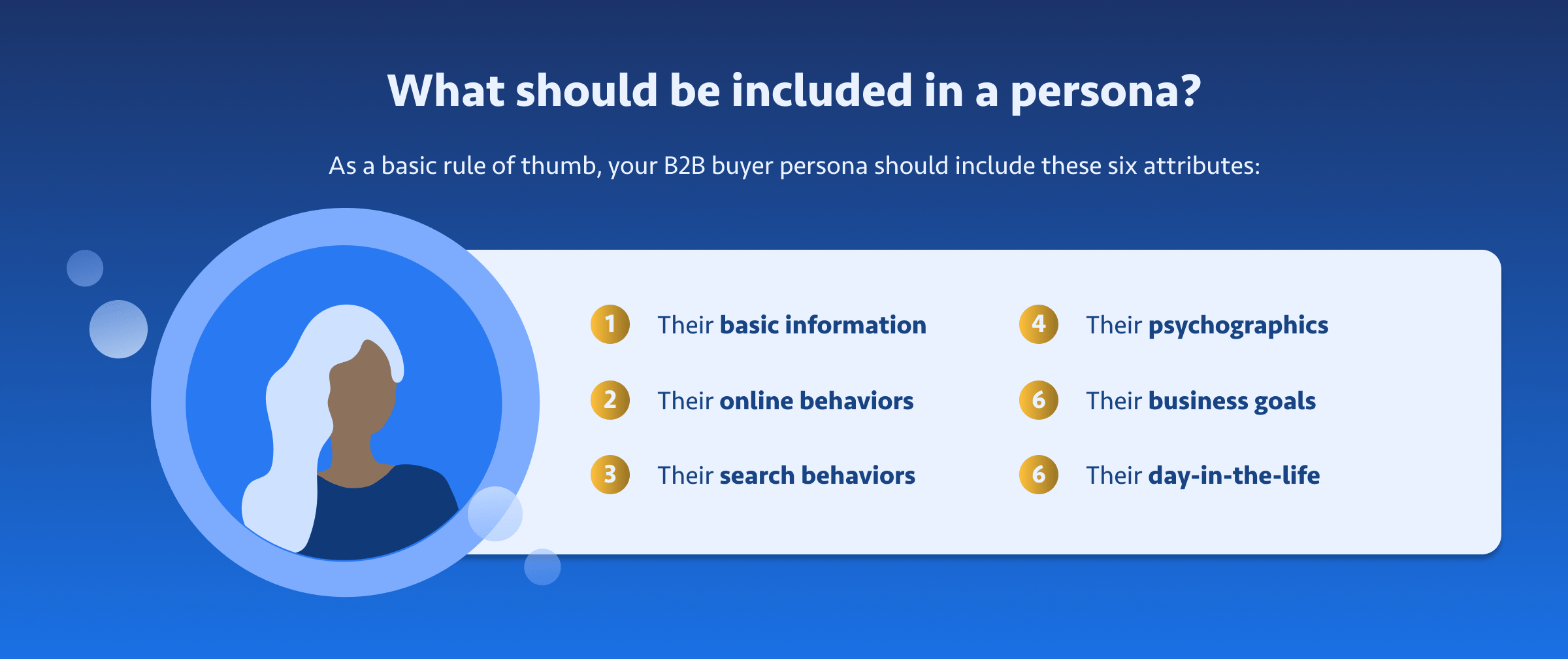How to Create A Strong B2B Buyer Persona: Definition, Research Tips, and More


Heather Lopez
This post was originally published in March 2019 and has been updated for accuracy and comprehensiveness.
In today’s oversaturated business world, you need to find effective ways to speak directly to your prospects’ anxieties — all without sacrificing efficiency. That’s why you need to create well-defined B2B buyer personas; they allow you to humanize your prospects and strategize ways to address their pain points successfully. But what are buyer personas and why are they important?
In this post, we’ll discuss:
- What is the definition of a buyer persona?
- Why is buyer persona important?
- What should be included in a persona
- Tips for conducting buyer persona research

B2B Marketing Strategy Framework: The Ultimate Guide to Business Branding
Learn how to build a strong brand experience with our downloadable guide.
What is the definition of a buyer persona?
A buyer persona is a collection of demographic, firmographic, and psychographic information that helps you define the organizational roles, needs, and goals of your prospects.

Demographic: The quantitative information about an individual, including age, gender, income, location, and language
Firmographic: The quantitative information about a company — including industry, company size, geographical location, structure, and overall performance
Psychographic: The qualitative information about individuals — including personality, attitudes, interests, and lifestyles
Now that you have a basic understanding of what makes a B2B buyer persona, let’s discuss why creating one is important in the first place.
Why is buyer persona important?
In short, creating a buyer persona is important because it allows you to single out key prospects that match your buyer persona and weed out irrelevant leads.
As sales leaders, we all know that personalizing your messaging to talk about your prospect’s unique challenges is key to improving your conversion rate. But did you know that brands that actively personalize their sales messaging reduce marketing and sales costs by 10-20%?
By creating well-defined B2B buyer personas, your sales and marketing teams will humanize the leads coming in and think of creative ways to strike a sales conversation with them.
That’s why 56% of surveyed business leaders say that they generate higher-quality leads with buyer personas. As a result:
75% of B2B buyers say that the winning vendor’s content has a significant impact on their buying decisions
48% of buyers are likely to choose solution providers who market to their specific needs
84% of buyers say that customer experience is just as important as products and services

Subscribe to EBQ's Bimonthly Newsletter

Subscribe to EBQ's Bimonthly Newsletter
What should be included in a persona?

As a basic rule of thumb, your B2B buyer persona should include these six attributes:
- Their basic information
- Their online behaviors
- Their search behaviors
- Their psychographics
- Their business goals
- Their day-in-the-life
1. Their basic information
Think of this as what you would ask in a generic lead form: you’re just trying to get a feel for who you’re targeting.
Some information should include:
- Their job title
- Their company industry
- Their company size
EBQ Tip: Keep in mind that you should be creating at least two buyer personas for your entire organization. That way, you can diversify how you target the right decision-makers over the long run.
For example, let’s say you are selling marketing automation software and decide to target both VPs and Directors. You should be creating a buyer persona per job title so you can drill down on how to speak to these professionals.
From our experience, your best approach for VPs is to focus on the overall value added for their department. On the other hand, we find that Directors often drill down on the technical aspects of software — which changes how you will reach out to these professionals.
For more information on tailoring specific buyer personas, read our Ultimate B2B Appointment Setting Guide.
2. Their online behaviors
Here, you’ll focus on how they spend time online during their “downtime” during work hours. That way, you can create a buyer’s journey that meets your prospects where they naturally are.
Typically, B2B buyers are on LinkedIn. This is where business leaders like you keep up with industry trends, connect with their networks, keep tabs on their competitors, and post jobs.
Another aspect to look into is discovering these prospects’ preferred industry publications. While these news sites are niche, they typically do an excellent job summarizing and alerting professionals on their industry’s current challenges and opportunities. That way, you can create buyer personas that encourage your sales and marketing teams to use these resources to guide their messaging strategy.
3. Their search behaviors
Now, you’ll focus on how your prospects are finding answers online. In other words, you’re now discovering their preferred keyword strands to find solutions online.
For example, are your prospects impatient and typically only look at paid search ads to find answers? Are they more detail-minded and drill down on organic search results to discover new articles? Understanding how your prospects interact with search engines will inform your buyer personas — and ultimately inform you on where to focus your marketing efforts.
EBQ Tip: In Chapter 4 of our B2B Marketing Strategy Framework, we discuss how to conduct strong keyword research. There, we dive into the differences in how you approach organic search results versus paid ones.
4. Their psychographics
Now, let’s focus on their overall behaviors and resistance to change. This is where you can really humanize your buyer persona by attributing some personality traits behind your buyer persona.
Some psychographic attributes to include include:
- How they prefer to communicate: Do they prefer to talk by phone? Emails? LinkedIn messages?
- Their overall attitude to sales calls: Do they respond better with a chattier and amiable personality? Or are they short on time and prefer the direct approach?
- Their adaptability to change: Do they have the time and the resources to integrate a new solution?
EBQ Tip: Let’s go back to our marketing automation example from “Their basic information.”
We mentioned how VPs typically focus on the value added to their department. While they may be short in time, they typically have more resources to execute their projects. Therefore, your marketing team should come prepared by creating relevant sales collaterals for VPs to mull over.
On the other hand, Directors often have the technical background to ask more challenging questions. That’s why you should be sending knowledgeable sales professionals who are experts in your solutions; these team members will know how to navigate these conversations better by confidently answering these highly technical concerns.
5. Their business goals
Let’s now take a step back by evaluating your prospects’ business goals and how your solution can solve their issues.
We recommend breaking their goals down into 3 key sections:
- Their long-term and short-term goals
- Their current challenges and future obstacles
- Their industry barriers — such as legal obstacles and tariff challenges
By drilling down and defining your prospect’s business goals in your buyer personas, your sales and marketing teams will have an easier time speaking directly to their purchasing anxiety.
6. Their day-in-the-life
Finally, let’s identify when is the best time to speak to your prospects. By painting a detailed picture of your prospects’ day-to-day work lives, you’ll be able to pinpoint a better opening to reach out to these prospects.
Some day-in-the-life aspects to consider include:
- Their daily responsibilities: Are they sitting in meetings most of their days? Or do they have a designated focus time to execute their tasks?
- Their habits and behaviors: Are they chronically online — especially during the mornings when they are grabbing another cup of coffee or during their lunch times?
Ultimately, understanding how your prospects work will help you create a persistent sales cadence with the least amount of resistance. A sales cadence informs your sales and marketing teams when to follow up with a lead to stay top-of-mind without overwhelming them.
3 tips for conducting buyer persona research
Your overall goal in conducting buyer persona research is to gather both qualitative and quantitative information on your prospects. That way, you’ll be able to draw out patterns that will inform how you speak to your prospects.
Here are our top three tips to better your buyer persona research:
- Start with your customer database: Assuming that your customer data is not decayed, you should start by assessing your current customers and discover key similarities among your top buyers. For example, it can be your point of contact’s job titles, their company size, or even their budgetary constraints.
- Leverage third-party analytics tools: Google Trends, LinkedIn Page Analytics, and Meta Business Suite are examples of what you can use to understand who is following you and how they found you. Sometimes, these tools even have AI integration that draws these patterns out for you.
- Utilize an SDR team: Collecting qualitative data through interviews and surveys is valuable, as they allow you to hear directly from clients about what drives their purchasing decisions. Your Sales Development Representatives are responsible for speaking directly to prospects, and you can use them to gather first-hand information on your prospects and their attitudes.

B2B Marketing Strategy Framework: The Ultimate Guide to Business Branding
Learn how to build a strong brand experience with our downloadable guide.
Creating strong B2B personas doesn’t have to be difficult
Today, customers have more options and more information at their fingertips than ever before. Thankfully, so do sales professionals. A well-defined B2B buyer persona leaves no stone unturned to truly learn your target audience inside and out, and it will make for a more successful sales journey.
If you are struggling with targeting the right audience, consider partnering with our B2B Lead Generation team to gather data, market, and set sales appointments with key prospects matching your buyer persona.

